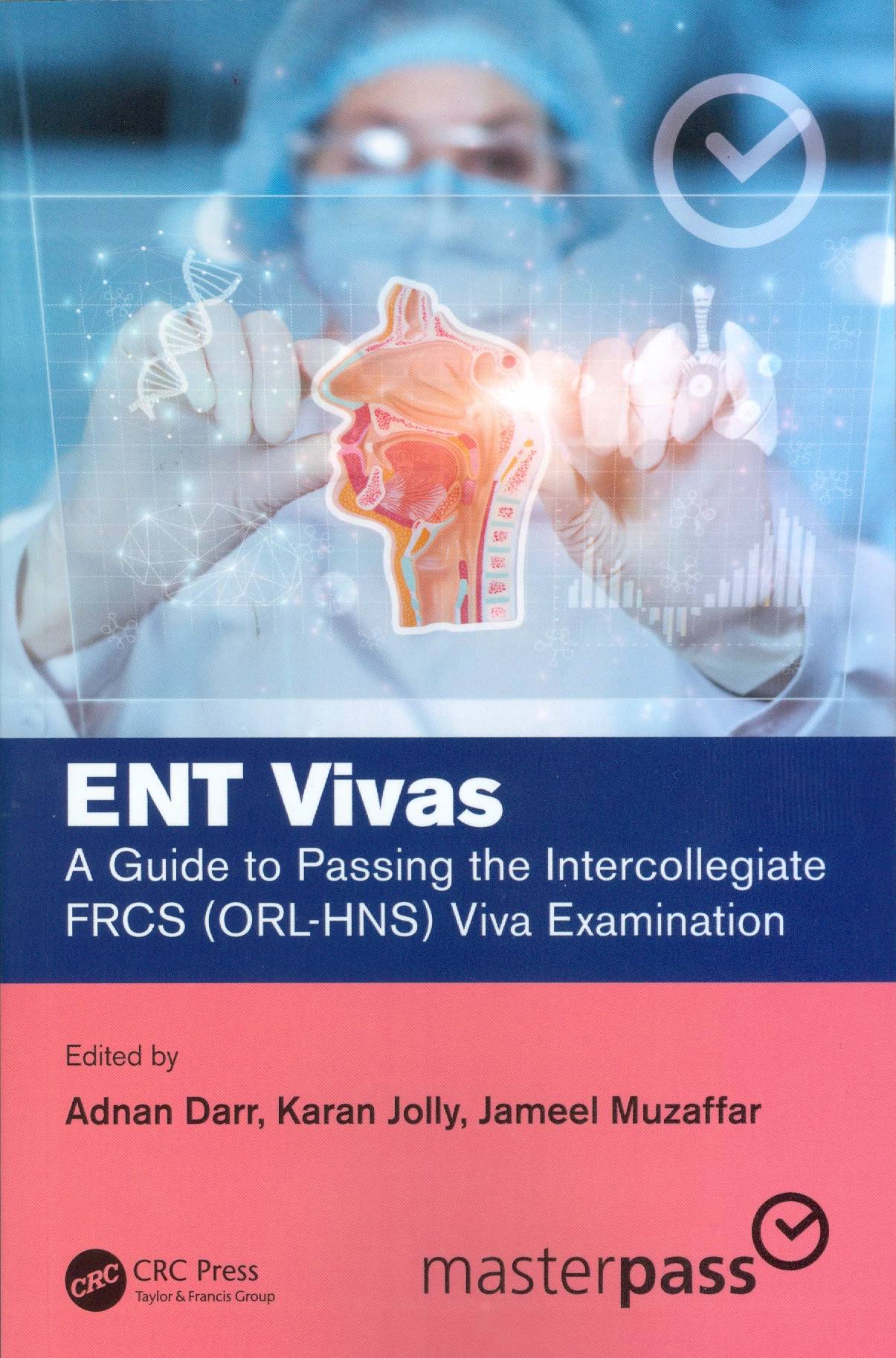Review by L Flood
Middlesbrough, UK
I thought this was an updated version of an earlier release by these publishers “Advanced ENT Training. A guide to Passing the FRCS (ORL-HNS) Examination” by Manjaly J and Kullar P (CRC Press. Taylor and Francis Group 2020) but this proves very different and both texts are of value. The earlier was almost unique in teaching examination “survival” skills, while this is more in the traditional “Short Notes on” format, with most of the chapters concentrating on specific clinical disorders, whether Grave’s Disease or Pharyngeal Pouch. That is invaluable for revision and makes this a useful revision text for any trainee, however remote the exam seems at the time.
From personal experience of 12 years on the easier side of the viva table, questions posed however tend to focus on clinical issues e.g. “A patient presents with a chronically discharging ear and a facial weakness. How will you mange this?”. Once the candidate has managed to diagnose cholesteatoma, then this book nicely kicks in. The authors clearly have only recently been on the receiving end and I suspect none were invited back in six months, so their personal inside knowledge may be limited. Fortunately, there are some very experienced examiners listed amongst the contributors. The Foreword is by Prof Quraishi, whose course in Doncaster has prepared FRCS candidates for decades. I was amused by the Introduction which lists abbreviations used in ENT, all 7 pages of them. Am I alone in obsessively looking at car numbers plates for OAE, SMR or PMH for example?
The text emphasises structure in the answers, which does help when under stress or in sheer panic and, of course, each of the four traditional viva stations merits sections that comprise the bulk of the book. My interest was most concentrated on the final two sections, the clinical examination and communication stations, surely the most dreaded for the candidates. The former merits 10 pages and I assume the Paediatric station is no more. That was a nightmare for the organisers, the candidates, let alone the subjects and their families and, if so, it will not be missed. The temporal bone drilling exercise equally did seem like a good idea at the time. I liked the model response to the inevitable question, “Is there anything else you would like to do” but would love to have seen this whole section expanded.
Finally comes the Communication Skills station and this proves the highlight of the book. I was worried that a patient with a Cocaine habit and septal perforation also proved cANCA positive, with no further comment. Much earlier on in the book I then read that this is due to the preservative Levamisole that accompanies the drug. The things that an old dog can still learn.
I was particularly grateful to the publishers for a paper copy of this book, as, like so many now, they tend to solely offer ebooks to reviewers. I would concede that the format of this book would lend itself to reading off a screen, as it is more a dipping-into than a read-cover-to-cover exercise. It certainly does not replace, but is very complementary to Manjaly and Kullar’s textbook and, of course, has a value well beyond the exit examination.
Amazon Link: ENT Vivas: A Guide to Passing the Intercollegiate FRCS (ORL-HNS) Viva Examination
By purchasing books via this link you will help to fund the JLO

